 Those wishing to taste the true flavours of old Macau can do no better than stop by Riquexó, a restaurant serving Macanese cuisine, a blend of Portuguese, Chinese, and on occasion, Southeast Asian ingredients and cooking styles.
Those wishing to taste the true flavours of old Macau can do no better than stop by Riquexó, a restaurant serving Macanese cuisine, a blend of Portuguese, Chinese, and on occasion, Southeast Asian ingredients and cooking styles.
The restaurant is still run by its original owner, Aida Jesus:

who despite being in her mid-90s, continues to look after Riquexó on a daily basis and, on occasion, even contributes dishes herself, such as xarope de figo, a sweet drink made from fig leaves. Besides being one of the few interested in preserving the culinary heritage of Macau, Dona Aida is also apparently one of the only remaining native speakers of Pátua, an old dialect of Portuguese that was previously spoken in the former Portuguese colony.
As the sign (above) suggests, Riquexó is self-service, and in fact is more like a cafeteria. You queue up, point to whatever looks good, and a tray will be brought to you.
Scanning the day’s offerings I immediately ordered capela:

I’d read about this traditional Macanese meat loaf, but had never previously tried it. The dish was rich and well seasoned, and the steamed greens were a perfect accompaniment. The cheesy crust and minced olives were signs of the dish’s Portuguese origins, and accompanied by rice and a cold Sagres, it was my favourite part of the meal.
We also ordered a dish of feijoada:

the bean stew that is also the unofficial national dish of Brazil, another former Portuguese colony. Riquexó’s feijoada featured a thick broth, the result of using a pig foot, and was supplemented with cubes of pork, carrots and cabbage.
And finally we ordered what is probably the most beloved Macanese dish of all, minchi:

Paradoxically, the dish has little resemblance to anything Portuguese or Chinese, and the name is most likely a corruption of the English word “minced”, but according to Célia Jorge, author of À Mesa da Diáspora, a book on Macanese cuisine, minchi single handedly embodies comfort food for people of mixed Portuguese and Chinese heritage. The dish combines minced beef (or pork, or a blend of the two) wok-fried with little more than onions and two types of soy sauce, and is served over rice or cubes of deep-fried potatoes with, on occasion, a fried egg. I’ve made it at home on a couple occasions and was particularly excited to try the ‘real’ version, which to be honest, wasn't quite as tasty when served at room temperature.
Additional information about Riquexó and Aida Jesus is available in this article, which also has a recipe for capela.
Riquexó
69 Avenida Sidónio Pais, Macau
+853 2856 5655
Noon-10pm
View Thai Eats in a larger map
 Lung Long, Mork Jampae, Mae Hong Son
Lung Long, Mork Jampae, Mae Hong Son











 Locals eating breakfast at Mae Hong Son's morning market
Locals eating breakfast at Mae Hong Son's morning market A rice field outside Mae Lana, Mae Hong Son, northern Thailand
A rice field outside Mae Lana, Mae Hong Son, northern Thailand  Eating breakfast at a hill tribe village outside Mae Lana
Eating breakfast at a hill tribe village outside Mae Lana Piglets at a hill tribe village outside Mae Lana
Piglets at a hill tribe village outside Mae Lana Limestone mountains outside Ban Tham Lot
Limestone mountains outside Ban Tham Lot  I've
I've  I told you it was pretty.
I told you it was pretty.
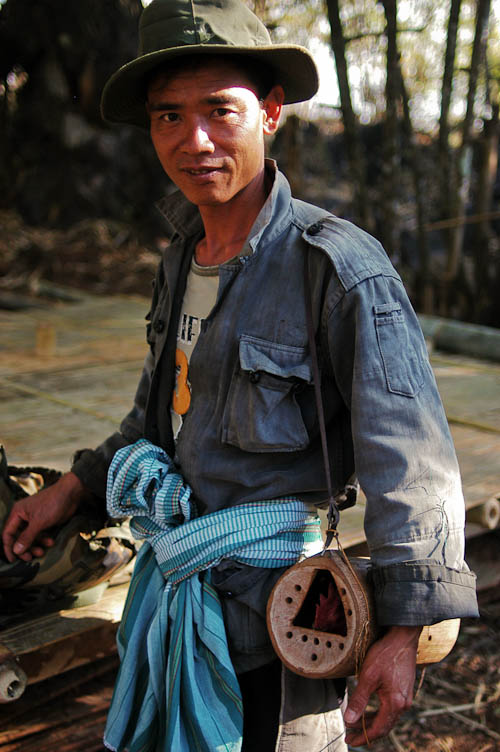 To regular readers, it will come as no surprise that, yet again, I find myself up in Mae Hong Son, northern Thailand. This time I'm only up here for 10 days, and am already doing a fair bit of writing, so I'd prefer to keep my blogging to mostly image-based, marginally food-related posts. A caveat: I'm shooting with my old D100, a single 35mm f/2 and am editing the images on a laptop, so the images won't be amazing, but to be honest, I find that the 400ISO JPEGs from this camera have an attractive old-school film-like quality.
To regular readers, it will come as no surprise that, yet again, I find myself up in Mae Hong Son, northern Thailand. This time I'm only up here for 10 days, and am already doing a fair bit of writing, so I'd prefer to keep my blogging to mostly image-based, marginally food-related posts. A caveat: I'm shooting with my old D100, a single 35mm f/2 and am editing the images on a laptop, so the images won't be amazing, but to be honest, I find that the 400ISO JPEGs from this camera have an attractive old-school film-like quality.
 Somehow I'd only consumed one pie, hastily and in the front seat of a car, during my stay in New Zealand, a situation I was determined to remedy. So on my last day in the country Hock did a bit of online research and we headed over to Kingsland to sample what the Internet told us were Auckland's best pies.
Somehow I'd only consumed one pie, hastily and in the front seat of a car, during my stay in New Zealand, a situation I was determined to remedy. So on my last day in the country Hock did a bit of online research and we headed over to Kingsland to sample what the Internet told us were Auckland's best pies.
 Because I've lived nearly my entire adult life in Thailand, a place where eating things such as
Because I've lived nearly my entire adult life in Thailand, a place where eating things such as 








 Frankly, I wasn't blown away by my restaurant meals during my recent stay in Auckland. We had some genuinely fun and tasty dinners, but what I'll continue to remember are the meals based around ingredients that we were able to pick, scavenge and hunt ourselves.
Frankly, I wasn't blown away by my restaurant meals during my recent stay in Auckland. We had some genuinely fun and tasty dinners, but what I'll continue to remember are the meals based around ingredients that we were able to pick, scavenge and hunt ourselves.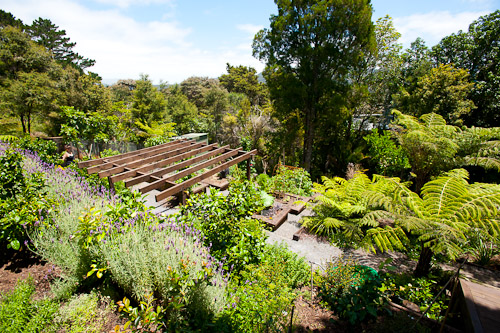
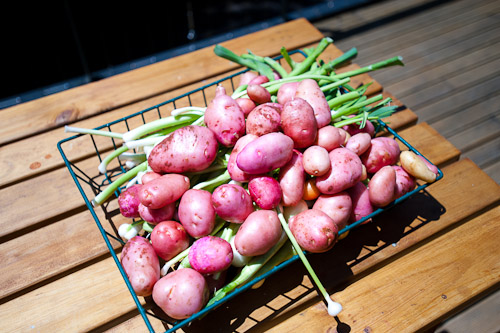


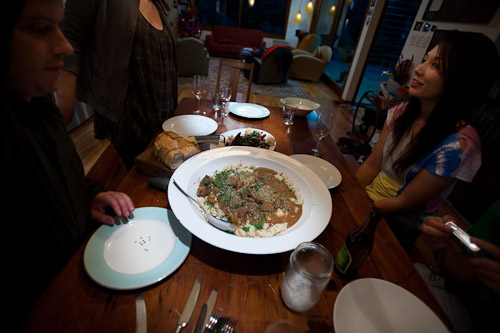



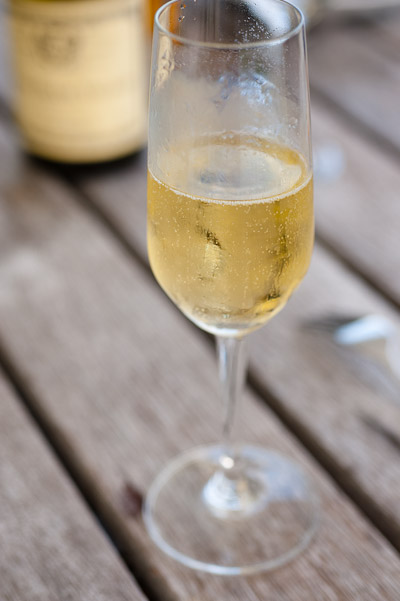
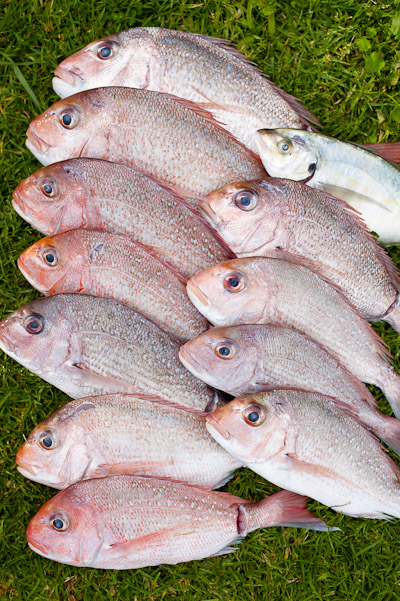

 Khao khluk kapi at Ratana, a curry stall in Bangkok's Nang Loeng Market
Khao khluk kapi at Ratana, a curry stall in Bangkok's Nang Loeng Market  In my previous post I mentioned that I was on a hunt for obscure ethnic restaurants in Bangkok. Well, after a bit of research, I think it's safe to say that it doesn't get much more obscure than my most recent discovery. Amirra is a minuscule, family-run restaurant that serves the food of the African nation of Cameroon.
In my previous post I mentioned that I was on a hunt for obscure ethnic restaurants in Bangkok. Well, after a bit of research, I think it's safe to say that it doesn't get much more obscure than my most recent discovery. Amirra is a minuscule, family-run restaurant that serves the food of the African nation of Cameroon.

 I'm currently at work on a piece about obscure ethnic restaurants for
I'm currently at work on a piece about obscure ethnic restaurants for 



 When I find myself in an unfamiliar province somewhere in Thailand and am in need of something to eat, my first course of action is typically to call Suthon Sukphisit. Khun Suthon writes the Cornucopia column that runs every Sunday in the Bangkok Post and is a wealth of knowledge about regional Thai food and interesting restaurants. In fact, I think Khun Suthon has been so many restaurants around Thailand that he's beginning to get them mixed up. On a recent trip to Suphanburi, a province about two hours north of Bangkok, I called Khun Suthon to ask if he had any recommendations and without hesitation he replied, "You should go to Paa Muay, it's in Pang Plaa Maa District, just outside Suphanburi." I made a mental note and headed off to Bang Plaa Maa, only to find that there was no Paa Muay, but rather the almost identically-named restaurants Phii Muay, Paa Muay (different tone) and Mae Buay. Not wanting to bother Khun Suthon any more, we placed our bets on Mae Buay, grandest of the lot. And although I haven't yet confirmed it with Khun Suthon, I'm pretty sure we made the right choice.
When I find myself in an unfamiliar province somewhere in Thailand and am in need of something to eat, my first course of action is typically to call Suthon Sukphisit. Khun Suthon writes the Cornucopia column that runs every Sunday in the Bangkok Post and is a wealth of knowledge about regional Thai food and interesting restaurants. In fact, I think Khun Suthon has been so many restaurants around Thailand that he's beginning to get them mixed up. On a recent trip to Suphanburi, a province about two hours north of Bangkok, I called Khun Suthon to ask if he had any recommendations and without hesitation he replied, "You should go to Paa Muay, it's in Pang Plaa Maa District, just outside Suphanburi." I made a mental note and headed off to Bang Plaa Maa, only to find that there was no Paa Muay, but rather the almost identically-named restaurants Phii Muay, Paa Muay (different tone) and Mae Buay. Not wanting to bother Khun Suthon any more, we placed our bets on Mae Buay, grandest of the lot. And although I haven't yet confirmed it with Khun Suthon, I'm pretty sure we made the right choice.


 I was originally drawn to Café Ou Mun, a tiny café in central Macau, for little more than an early morning galão (the Portuguese equivalent of a café au lait) and a pastry. But the quality of the food led me to make a few more visits, including one proper meal.
I was originally drawn to Café Ou Mun, a tiny café in central Macau, for little more than an early morning galão (the Portuguese equivalent of a café au lait) and a pastry. But the quality of the food led me to make a few more visits, including one proper meal.




 Despite my
Despite my 

 Those wishing to taste the true flavours of old Macau can do no better than stop by Riquexó, a restaurant serving Macanese cuisine, a blend of Portuguese, Chinese, and on occasion, Southeast Asian ingredients and cooking styles.
Those wishing to taste the true flavours of old Macau can do no better than stop by Riquexó, a restaurant serving Macanese cuisine, a blend of Portuguese, Chinese, and on occasion, Southeast Asian ingredients and cooking styles.



 Art critic and mate Steven Pettifor has put together
Art critic and mate Steven Pettifor has put together  Despite having owned the place for five centuries, the Portuguese influence on Macau is actually quite superficial. The Macau of today is essentially a very Chinese city with a few Portuguese-style buildings, a very small minority of people of Portuguese descent, a handful of Portuguese restaurants and an abundance of azulejos (Portuguese blue tiles). Fortunately Macau is rather compact, so for those interested, seeking out the remnants of Portuguese culture, particularly those that are edible, is not difficult. And perhaps the most ubiquitous and tastiest remnant of the Portuguese colonial legacy are pastéis de nata, or more commonly in Macau, Portuguese egg tarts.
Despite having owned the place for five centuries, the Portuguese influence on Macau is actually quite superficial. The Macau of today is essentially a very Chinese city with a few Portuguese-style buildings, a very small minority of people of Portuguese descent, a handful of Portuguese restaurants and an abundance of azulejos (Portuguese blue tiles). Fortunately Macau is rather compact, so for those interested, seeking out the remnants of Portuguese culture, particularly those that are edible, is not difficult. And perhaps the most ubiquitous and tastiest remnant of the Portuguese colonial legacy are pastéis de nata, or more commonly in Macau, Portuguese egg tarts.